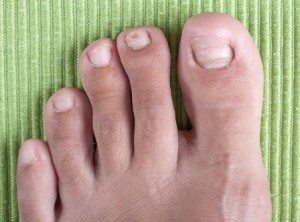 Arterial ulcers typically affect the heel and toes – particularly the areas between the toes where they rub against one another. If someone has recently trimmed his or her toenails too aggressively, that could increase the chances of the condition occurring. Here is some information on symptoms, treatments and what you can do to reduce your risk.
Arterial ulcers typically affect the heel and toes – particularly the areas between the toes where they rub against one another. If someone has recently trimmed his or her toenails too aggressively, that could increase the chances of the condition occurring. Here is some information on symptoms, treatments and what you can do to reduce your risk.
Symptoms of Arterial Ulcers
If you notice a wound that looks like it has a black, yellow or brown coloring to it – and it does not bleed – that may be a sign you have an arterial ulcer. You may also experience redness and swelling, although these do not occur in every instance.
Arterial ulcers can be extremely painful, especially when you are trying to sleep. Many people dangle their foot over the side of the bed in order to find relief.
Treatment for Arterial Ulcers
The type of treatment for arterial ulcers will vary depending on how severe the condition has become. There are non-invasive tests that can provide your doctor with the tools he or she will need in order to determine the best treatment plan. The main goals of treatment will be to protect the skin in the area that has been affected, to prevent new ulcers from occurring, and to remove sources of ulcer irritation.
More than likely, your doctor will first recommend that you avoid putting pressure or weight on the area for a certain length of time. You may need to undergo debridement procedures on a regular basis to remove any tissues that have become infected. In addition, you may need to wear orthotics or special shoes.
There are certain things you can do to help reduce the chances you will develop arterial ulcers. These include examining your feet closely to look for any changes in color or the development or sores, quitting smoking, wearing shoes that fit properly and more.
Contact Us About Arterial Ulcers
Talk to an expert with Advanced Foot and Ankle Care Specialists if you suspect you have developed arterial ulcers. We will perform a thorough examination and then determine the best course of treatment. Contact us online or call (214) 366-4600 to schedule an appointment.






















